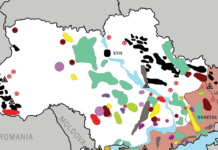
The Interesting Engineering reports that water splitting to produce clean hydrogen fuel has long been limited by inefficiencies, especially in the oxygen evolution reaction (OER). Researchers at Northwestern University found that misalignment of water molecules at the electrode surface demands more energy than theory predicts. Using hematite and a specialized observation technique, they discovered that molecular “flipping” — needed for efficient electron transfer — is a key barrier. Crucially, they found flipping becomes easier at higher (basic) pH levels, offering a promising path to improve water splitting efficiency and lower costs. They write:
Water splitting has long been hailed as a promising path to clean hydrogen fuel. But while the process looks elegant on paper, it turns out to be far less efficient in practice, demanding significantly more energy than theory predicts. Now, scientists at Northwestern University have discovered a surprising culprit behind this energy gap.
“When you split water, two half-reactions occur,” said Northwestern’s Franz Geiger, who led the study. The half-reaction that produces oxygen is really difficult to perform because everything has to be aligned just right. It ends up taking more energy than theoretically calculated. If you do the math, it should require 1.23 volts. But, in reality, it requires more like 1.5 or 1.6 volts.” […]
“You still need to apply a current to perform the electrochemistry, but the sun’s photons allow you to apply less voltage. And the less voltage you apply, the cheaper the fuel becomes.” Our study shows that the catalyst surfaces need to be tailored to facilitate water flipping so the electron transfer can initiate.”
Read more here.



